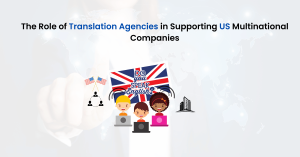There are many successful companies that have achieved global success.
It is essential before launching your products abroad to have a proper marketing strategy. This is to get your brand recognised and maintain your message correctly everywhere.
As translation and localisation services providers, in this article, we are giving you some information and advice on how to achieve great results in the global market.
Brand recognition
Brand recognition is the ability of a consumer to recognise one brand over other brands. In other words, it’s the ability of consumers to identify your product by its attributes and design elements.
A product should be recognised without even using it`s name if brand recognition is done right. The goal is to get potential customers to recognise the product instantly without requiring much effort. Can you think of a particular technology company identified with a particular fruit, or a restaurant symbolised by golden arches?
Another example: when you think of soda, especially in movies and TV shows, one name quickly comes to mind: Coca-Cola.
A brand’s value is directly connected to its presence in the memory of consumers. Quite simply, if a customer remembers a brand, he or she is likely to buy that brand. If they don’t remember it, they will buy the alternative which they are familiar with. Thus, for a brand, it is important to set itself in customers memory.
We have a high awareness to brands that our brains subconsciously want. This is an example to show the concept of branding.
Last year, Consumer Reports magazine listed McDonald’s hamburgers as the worst tasting of 21 major fast food chains.
So how does McDonald’s dominate the fast food burger market when 54,000 random respondents rate them as the least tasty?
The simple answer is: branding.

Branding
We’ve all grown up seeing the McDonald’s brand everywhere. From television to radio to billboards to being Sponsors of Sport, Music and big international events.
That’s why we are more likely to choose a McDonald’s restaurant over all the other fast food burger restaurants, that are not so well-known and do not have brands as strong as this one.
Another very important concept that is facing marketing studies and researchers nowadays is neuromarketing. Let’s try and get an idea on what it is all about.
Neuromarketing
Neuromarketing aims to better understand the impact of marketing stimuli, by observing and interpreting human emotions. The rationale behind neuromarketing is that human decision making is not so much a conscious process.
Marketing has discovered neuroscience with a new, revolutionary branch: “Neuromarketing”. By measuring the brain it promises to target the unconscious desires of consumers as mentioned above.
Neuromarketing is a serious research area. Consumer decision making and response is a scientifically sound, interesting field in cognitive science. It is understood on the level of body and mind. This might involve looking at how familiar brand logos engage the memory systems in the brain, or examining whether the direction of eye gazes of people in ads affects how attention-grabbing they are. And finally testing whether the brain’s electrical activity varies when watching subtly different ads.

How does Neuromarketing work?
The headlines are ominous: soon, the bright boys of the advertising world will get their sticky hands on our inner “buy button.” Soon, marketing experts, with the help of cutting-edge brain research, will get direct access to the inner depths of our brains. Here, with the right stimulation, they can unleash our buying impulses and get their cash registers ringing.
Experiment to why we buy certain products.
- In 2003 Clinton Kilts of Atlanta’s Emory University called in a team of volunteers for a series of experiments to throw light on the brain’s role in product preferences.
- Volunteers had to rank an array of customer goods by appeal. Simple answers on a numerical scale.
- In the next phase, they were taken through the MRI scanner as they were once again shown the same goods, while the apparatus registered the brain activity they aroused.
- Every time one of them –male or female– saw a product they really liked, blood rushed to a little area towards the front of the brain. The medial prefrontal cortex lit up like a beacon in the images.
- CONCLUSION: The medial prefrontal cortex is not just any old brain region. It is an area very much involved in our self-identification and the construction of our personality in general. When we relate to ourselves and to who we are in some way this part of the frontal lobes is involved. Kilts was quick to draw his conclusion. The scanning experiments, he believed, indicated that, if you are attracted by a product, it is because you identify with it. That the product fits into the picture you have of yourself.
In Conclusion
The discussion quickly came to turn on the concept of branding. The fact that something–be it a product, an institution or a concept, for that matter–is not just immediately recognisable but has a narrative of its own. The product is not just a physical thing but comes with a whole mental universe that penetrates the consumer. Think of Gucci, iPod, Mercedes, and take note of the images the words bring to mind. Branding has been a hot topic for a long time in the advertising world, and it is one with phenomenal force. Most of us know that branding palpably influences our choices and shopping habits. Researchers however suspect that branding can also fundamentally change the way we comprehend sense impressions.
http://study.com/academy/lesson/
https://www.theguardian.com/science/2015/jun/28/vaughan-bell-neuroscience-marketing-advertising
Translations may not show the effect, emotion, response and outcome intended with the original. For example logos, names or mottos. This is because most languages have their own nuances.








